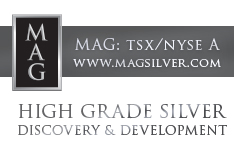Throughout the ages, a singular treasure has dominated all others.
It elevated rulers, sustained military forces, and transformed the destiny of nations.
It remains the common strand woven throughout humanity's journey. When nations expanded their reach, it bankrolled their conquests. When royal houses fell, it provided their displaced leaders an opportunity to start anew.
Conflicts erupted not merely over territories but for the privilege of controlling this resource.
And today, in our technology-driven era, as global economies stagger under massive debt burdens, it stands alone as the final barrier against financial ruin.
I speak of gold.
While Bitcoin and various paper investments have captured recent attention, gold endures as the ultimate refuge during uncertainty.
For those genuinely seeking to safeguard their wealth, nothing surpasses gold. Indeed, there's simply no rival.
Unlike traditional currencies, gold boasts an unbroken 5,000-year record of maintaining value.
In today's landscape of bytes, mathematical formulas, and electronic currency, gold persists as the worldwide foundation of economic stability. Central banking institutions stockpile it, astute investors pursue it, and entire countries base their survival upon it. Repeatedly, when confidence in paper promises wavers, humanity returns to something eternal, something physical: gold.
This includes the globe's dominant superpower: the United States of America.
A Golden Pivot
Typically in Washington, major announcements arrive with official vehicles and formal statements, or regarding Trump, military aircraft displays featuring advanced fighter jets and bombers.
Yet beneath this polished exterior, America's deficit continues its unstoppable growth. The administration's strategy appears predictable: accumulate additional debt, increase taxation, and trust that the framework remains intact.
Still, one question persists — is there an escape from this downward cycle?
Perhaps there exists an option, at minimum, a way to postpone the inevitable . . .
Research organizations have long functioned as professional catastrophe analysts.
In exclusive meeting rooms and policy documents, they contemplate the unimaginable: worldwide health crises, monetary collapses, digital warfare, and energy disruptions. Their mission isn't forecasting — but preparation.
Consider the Event 201 simulation from October 2019, coordinated by Johns Hopkins Center with international partners. This simulation examined a hypothetical coronavirus outbreak's worldwide impact. Shortly thereafter, COVID-19 emerged globally, transforming speculation into reality.
This wasn't the initial instance when foresight appeared prophetic.
During the late 1990s, various institutions published scenarios regarding cyber conflicts — well before government-sponsored digital attacks became commonplace. Policy groups warned about potential Russian military actions in Eastern Europe long before events in Crimea and Ukraine validated those concerns. Following the 2008 economic crisis, numerous organizations conducted simulations regarding sovereign debt failures — scenarios later mirrored in Greece's financial turmoil.
Even pre-COVID pandemic readiness exercises weren't unusual. Clade X occurred in 2018, also organized by Johns Hopkins, modeling a rapidly spreading respiratory illness. The American government's Dark Winter scenario in 2001 had previously examined how a biological attack could overwhelm existing systems.
Repeatedly, these organizations outline potential futures that appear extreme — until suddenly they materialize. For them, it's not paranoia; it's strategic planning. And historical patterns demonstrate that when they conduct their simulations, global leaders should heed the warnings.
Particularly when the world's largest financial institution communicates.
The Federal Reserve
Recently, the Federal Reserve discreetly issued a research note, suggesting debt-burdened governments are investigating whether to finance operations by reassessing their official reserves through gold valuation.
According to the Federal Reserve:
"With public debt at high levels, some governments have begun to explore financing additional expenditures without raising taxes while also not increasing public debt outstanding. One possibility is using proceeds from valuation gains on gold reserves, as has been floated in the U.S. and Belgium recently. For the U.S., this would involve revaluing the government's 261.5 million troy ounces in gold reserves — the largest gold reserves globally — from a statutory price of $42.22 per troy ounce to current market prices, which stand around $3300 per troy ounce."
The analysis examines how nations, including Germany, Italy, Lebanon, South Africa, and smaller territories, have utilized their reserve "revaluation gains" — the accounting profits from appreciating gold and currency values — to buy additional time during fiscal challenges. In some instances, the funds addressed central bank deficits, like Italy's €13 billion maneuver in 2002 or Curaçao's innovative gold transactions after 2021. In other cases, governments themselves captured the windfall to reduce obligations, as Lebanon implemented in 2002, directing revaluation gains worth an impressive 11% of GDP.
The Fed's evaluation makes one aspect evident: reserve revaluations provide immediate liquidity, not permanent solutions. They can address immediate shortfalls, prevent embarrassment, or relieve political pressure, but they don't resolve the fundamental issue of persistent deficits.
But naturally, the Fed will tell you exactly that. It will insist it's merely an academic discussion; that it won't resolve current challenges (which is accurate).
Especially when the Fed stands to benefit.
To comprehend why the Fed might pursue this, you must understand the implications of American gold revaluation.
Accounting Magic
While the Fed publicly minimizes the research note, the actual significance — largely unnoticed — exists within an obscure Depression-era mechanism called the Gold Certificate Account.
Established in 1934, this system artificially values America's gold at merely $42 per ounce, a tiny fraction of contemporary market rates. Hidden within this accounting peculiarity lies an untapped reservoir of wealth.
America reportedly possesses 261.5 million ounces of gold. Officially, this reserve appears worth only $11 billion. At today's valuation exceeding $3,300, it represents nearly $900 billion — approximately 3% of American GDP.
Simply put, the U.S. could revalue this gold by employing it as financial collateral.
The Gold Certificate Account
You won't discover any simple mechanism labeled "Revalue Gold" anywhere.
Instead, you'll find interconnected financial records.
According to the Fed's Financial Accounting Manual:
"The Secretary of the Treasury is authorized to issue gold certificates to the Reserve Banks to monetize gold held by the U.S. Department of the Treasury." At any time, the Treasury may "reacquire the gold certificates by demonetizing the gold."
Historically, virtually all governmental gold has been monetized through this process, explaining why the Fed's Gold Certificate Account remains at approximately $11 billion — the statutory value, not market value.
How would revaluation function practically?
The Fed document outlines a theoretical balance sheet progression, based on other nations' experiences: Treasury cancels the existing certificate, establishes a new official price, transfers gold to the Fed at the higher valuation, receives substantially increased Fed credit, then reissues certificates at the new level. No physical gold moves – only accounting entries change.
The Fed describes it as a one-time adjustment that "would equal about 3% of U.S. GDP" at current market rates.
But here's the financial sleight-of-hand few recognize.
Treasury owns America's gold — all 261.5 million ounces — but the Federal Reserve maintains a claim against it through the Gold Certificate Account.
By statute, the Fed cannot possess physical bullion, so it holds certificates valued at just $42.22 per ounce.
What happens if Washington decides to reassess gold's price and credit the difference to the Fed?
Suddenly, the Fed's balance sheet expands dramatically, Treasury's account receives substantial funds (which will quickly be allocated), and the administration avoids another debt-ceiling confrontation (temporarily).
And immediately, the Fed effectively assumes control over America's entire gold reserve.
Now, your immediate thought might be: "But the Federal Reserve already possesses those claims."
And technically that's correct, however. . .
The Fed Has Everything
Here's the crucial revelation: the Fed only owns claims fixed at $42.22 per ounce.
Since the Fed cannot directly own gold, theoretically, the United States could repay those claims with currency.
In other words, America could potentially repurchase nearly $900 billion of gold for merely $11 billion, leaving the Fed without claims against the gold.
But naturally, the Fed would prevent that scenario, nor would revaluation make strategic sense for America without mechanisms to monetize that gold.
So, after America "reclaims" the gold for $11 billion, it immediately transfers it back to the Fed at the market price of $900 billion.
America receives $900 billion in Fed currency, without borrowing, interest obligations, or creating new money. The Fed acquires $900 billion in gold for essentially nothing.
That's revaluation simplified.
And here's where matters become concerning.
Gold isn't exceptional in this context. It's simply the most apparent example. The principle remains consistent everywhere: the Fed doesn't need to possess the actual asset — it needs to control the numerical value defining the asset. That's how, during crises, the Fed already purchases Treasury bonds, mortgage securities, and even corporate obligations.
That's precisely why, in 2016, we informed readers that equities would continue rising because the entity with unlimited resources was buying. And that entity is, obviously, the Fed.
Connect these dots.
If the Fed can revalue gold and transform $11 billion into nearly $900 billion instantly, what prevents extending this approach? A market collapse, fiscal emergency, armed conflict — and suddenly the Fed isn't merely the purchaser of last resort. It becomes the ultimate owner. Stocks. Property. Digital assets. Whatever necessary to preserve "the system."
That represents genuine power mechanics. Ownership through numerical control. The Fed doesn't require physical gold bars or equity certificates. It simply adjusts the accounting, and global markets comply.
Which leaves us in a framework where "value" means whatever the Fed declares. The conclusion isn't that the Fed controls gold; the conclusion is that the Fed controls everything.
So what remains that cannot be conjured, revalued, or obscured? What cannot be "deactivated" through keystrokes?
The answer matches what central banks themselves have quietly accumulated for years: gold.
Because gold exists independently of Fed authorization, it isn't someone else's obligation. It isn't a ledger entry subject to overnight redefinition. It's the singular asset outside Fed jurisdiction — unless they revalue it to "preserve the system."
And when they do, that revaluation proves the fundamental point: gold provides ultimate protection because it represents the standard they cannot fabricate.
The Fed may control everything existing on paper. But the one element transcending paper is gold.
The European Central Bank noted recently that at market prices, gold has surpassed the euro as the world's second-largest reserve asset, behind only the US dollar - or perhaps more accurately, the Fed dollar.
In essence, if America revalues gold, the Fed will not only dominate the world's primary reserve asset but also control the global second-largest reserve asset.
Let me emphasize: the Fed owns EVERYTHING.
But here's the most significant revelation. . .
Final Thoughts
Conventional wisdom suggests rising gold prices weaken the dollar. While partially accurate, everyone has overlooked a crucial consideration.
If America revalues gold today, it gains access to nearly $900 billion – without monetary creation, borrowing, or tax increases.
Similar principles apply to other nations and central banks.
What if gold appreciates to $8000 per ounce?
That revaluation becomes $2 trillion, requiring only administrative action.
Essentially, higher gold prices increase the likelihood of Congressional gold certificate revaluation.
Given America's enormous and rapidly expanding debt burden, elevated gold prices actually benefit American interests.
Don't be surprised when Trump or other political figures enthusiastically promote gold, particularly if revaluation approaches.
Seek the truth and remain vigilant.
| Want to be the first to know about interesting Gold investment ideas? Sign up to receive the FREE Streetwise Reports' newsletter. | Subscribe |
Important Disclosures:
-
Statements and opinions expressed are the opinions of the author and not of Streetwise Reports, Street Smart, or their officers. The author is wholly responsible for the accuracy of the statements. Streetwise Reports was not paid by the author to publish or syndicate this article. Streetwise Reports requires contributing authors to disclose any shareholdings in, or economic relationships with, companies that they write about. Any disclosures from the author can be found below. Streetwise Reports relies upon the authors to accurately provide this information and Streetwise Reports has no means of verifying its accuracy.
- This article does not constitute investment advice and is not a solicitation for any investment. Streetwise Reports does not render general or specific investment advice and the information on Streetwise Reports should not be considered a recommendation to buy or sell any security. Each reader is encouraged to consult with his or her personal financial adviser and perform their own comprehensive investment research. By opening this page, each reader accepts and agrees to Streetwise Reports' terms of use and full legal disclaimer. Streetwise Reports does not endorse or recommend the business, products, services or securities of any company.
For additional disclosures, please click here.
Equedia Investment Research Disclosures
Equedia.com and Equedia Network Corporation are not registered as investment advisers, broker-dealers or other securities professionals with any financial or securities regulatory authority. Remember, past performance is not indicative of future performance. This article also contains forward-looking statements that are subject to risks and uncertainties that could cause actual results to differ materially from the forward-looking statements made in this article. Just because many of the companies in our previous Equedia Reports have done well, doesn’t mean they all will. We are biased towards Nevgold (NAU) because the Company is an advertiser on www.equedia.com. We currently own shares of NAU. You can do the math. Our reputation is built upon the companies we feature. That is why we invest in every company we feature in our Equedia Special Report Editions. It’s your money to invest and we don’t share in your profits or your losses, so please take responsibility for doing your own due diligence and consult your own professional advisers before investing in NAU or trading in NAU securities. NAU and its management have no control over our editorial content and any opinions expressed in this article are our own. We’re not obligated to write a report on any of our advertisers and we’re not obligated to talk about them just because they advertise with us. For a complete disclosure of the compensation received by us from NAU, please review our Terms of Service and full disclaimer at www.equedia.com/terms-of-use/.
This newsletter (this “Newsletter”) is provided by Equedia Network Corporation (“Equedia”, “we” or “us”). Your access to and use of this Newsletter is subject to and governed by this disclaimer and Equedia’s Terms of Use, which is available at http://www.equedia.com/terms-of-use (the “Terms”). Please read this disclaimer and the Terms carefully. This Newsletter is not an offer to sell or a solicitation of an offer to buy any securities or commodities. To the extent that anything contained in this Newsletter may be deemed to be investment advice or a recommendation in connection with a particular company or security, such information is impersonal and is not tailored to the needs of any specific person. In addition to historical information, this Newsletter may contain forward-looking statements, including statements with respect to third parties regarding product plans, future growth, market opportunities, strategic initiatives, industry positioning, customer acquisition, the amount of recurring revenue and revenue growth. In addition, when used in this Newsletter, the words “will,” “expects,” “could,” “would,” “may,” “anticipates,” “intends,” “plans,” “believes,” “seeks,” “targets,” “estimates,” “looks for,” “looks to,” “continues” and similar expressions, as well as statements regarding a third party’s focus for the future, are generally intended to identify forward-looking statements. Each of the forward-looking statements we make in this Newsletter involves risks and uncertainties that may cause actual results to differ materially from these forward-looking statements. Factors that might cause or contribute to such differences include, but are not limited to, those disclosed by the parties referred to in this Newsletter in their public securities filings. You should carefully review the risks described therein. You should not place undue reliance on the forward looking statements in this Newsletter, which speak only as of the date such statement was published. Equedia undertakes no obligation to publicly release any revisions to the forward-looking statements or reflect events or circumstances after the date of their publication, except as required by law. As of the date of publication of this Newsletter, Equedia (on behalf of itself and any partner, director, officer or insider of Equedia) may have a financial or other interest in the party or parties featured in this Newsletter, within the meaning of National Instrument 31-103 – Registration Requirements, Exemptions, and Ongoing Registrant Obligations, published by the Canadian Securities Administrators. For full details of our compensation, please visit https://www.equedia.com/terms-of-use/.
As of the date of publication of this Newsletter, Equedia (on behalf of itself and any partner, director, officer or insider of Equedia) may have a financial or other interest in the party or parties featured in this Newsletter, within the meaning of National Instrument 31-103 – Registration Requirements, Exemptions, and Ongoing Registrant Obligations, published by the Canadian Securities Administrators. Equedia and its directors own shares of Nevgold (NAU) at the time of this writing. In May 2025, Equedia was paid C$350,000 for a six month advertising contract for NAU, which includes expenses for advertisements on third party sites or other third party coverage that we arranged for NAU. These services were paid for by NAU. We have also previously been compensated by NAU for advertising contracts which have expired. For full details of our compensation, please visit https://www.equedia.com/terms-of-use/.










































